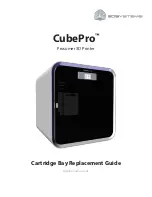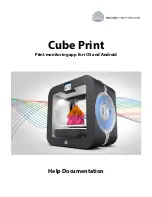
Programming
0705
TTPM3 Printer/Encoder–Technical Manual
27
4.6 Command
Reference
The commands in this section are grouped after what they do, and these groups are
sorted in a theoretical usage sequence. It starts with commands for setting up the printer
— through document entry commands — text-and-graphics commands — encoding /
reading commands. Then we end with storage commands that handle the flash memory
of the printer.
4.6.1 System
commands
!C
21 43 n1
Hex
33 67 n1
decimal
Clear all
This command takes no parameter. All definitions are cleared. Stored layout is erased.
Subsequent
!C
’s are ignored.
The
!C
command is also used to initialize TTPM3 after a power ON.
Auto-clear can be used to clear the memory between tickets instead of using
!C
. Auto-
clear executes faster than
!C
. When auto-clear is enabled any
!C
commands in the
received data will be ignored, apart from when initiating the printer. Use parameter 57 to
enable/disable auto-clear.
!CA
, adding an A to the
!C
command enables extended acknowledgement.
!C1
, adding the digit 1 to the
!C
command clears the wastebasket counter. See
!Y1
.
!P
21 50
Hex
33 80
Decimal
This command triggers both the encoding, printing, cutting and ejecting of a ticket.
Printing follows a successful encoding. The magnetic code and print information, as well
as cut and eject behavior, must first be defined using the applicable commands.
If
!P
is received before a clear all command after power ON, the
!P
will initiate the printer
without printing a ticket. This means that all data received prior to the
!P
will be
discarded.
If !P is received and the printer is out of paper, it will give error code NAK P and discard
the received data.
EJECT TO WASTE BASKET
Adding an @ character (
!P@
) makes the printer eject the completed ticket into
wastebasket (FL3 printers). One use for this can be to make status printouts that are not
intended for the customer.
ENCODING RETRIES
Adding a single digit after the
!P
makes it possible to set the maximum number of
encoding retries for one ticket. The number given is the number of additional tries i.e.
















































